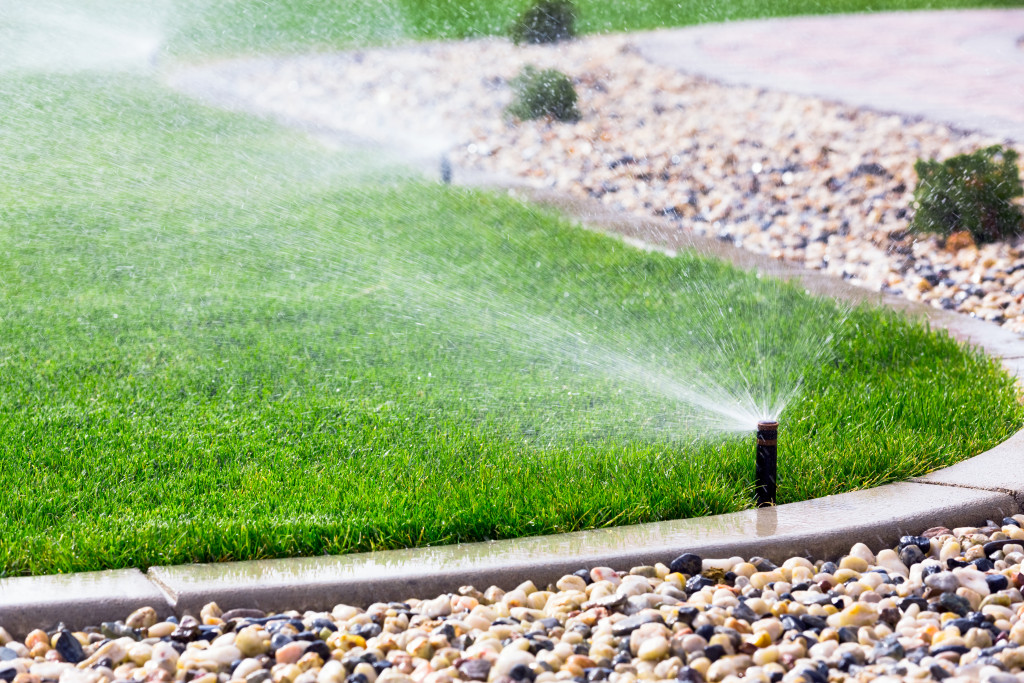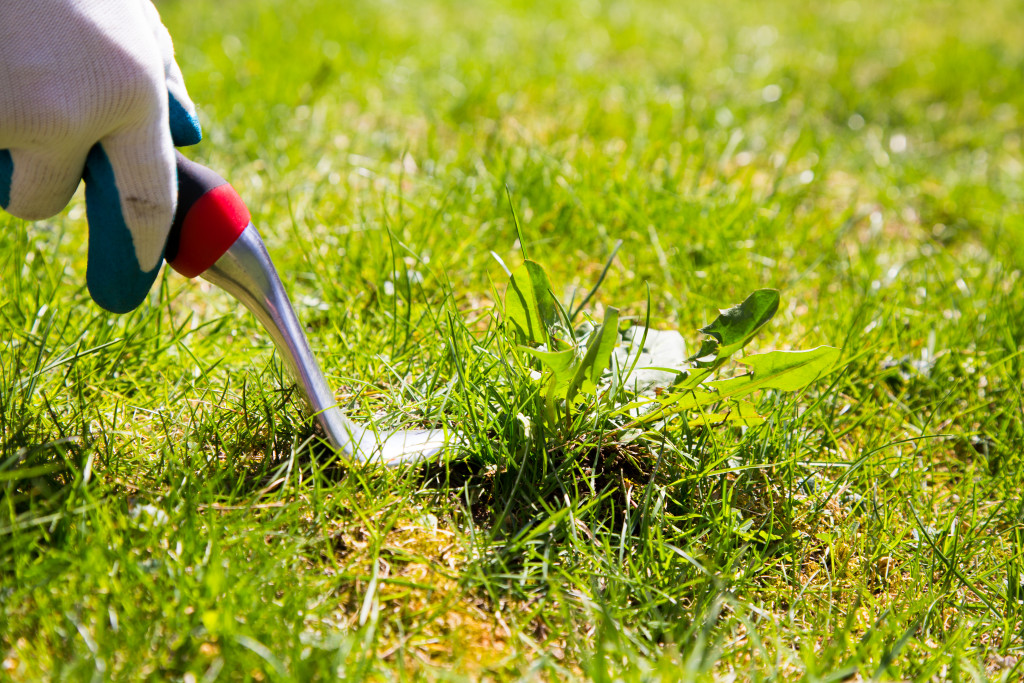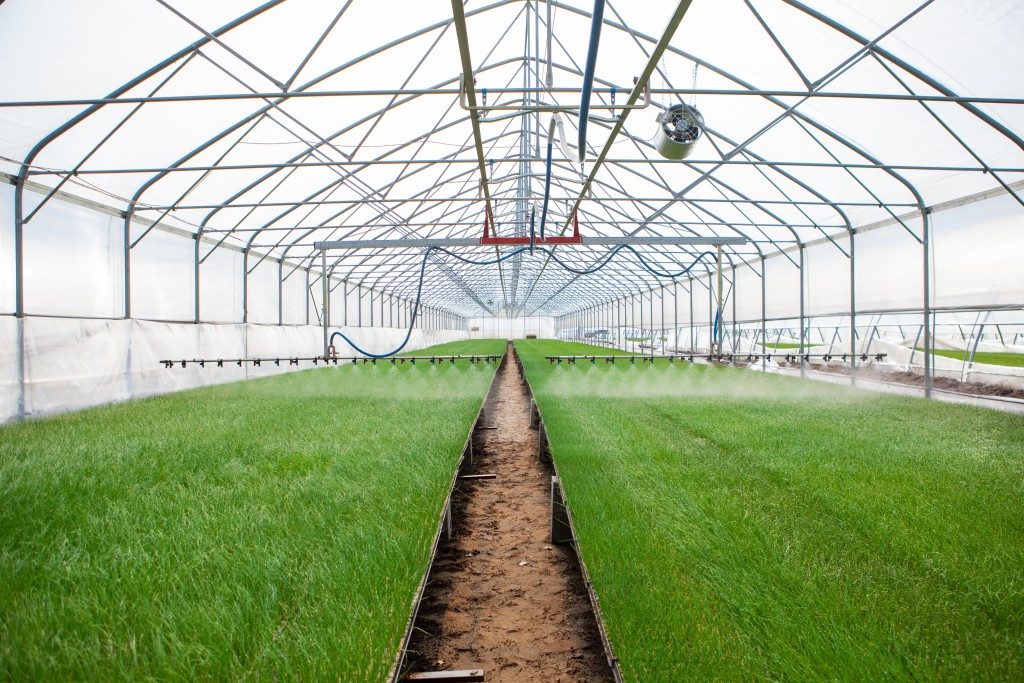- Mowing, watering, fertilizing, and pest control management are essential to maintain a healthy lawn and reduce flooding risk.
- Different grasses have different mowing heights and fertilization needs; never cut more than 1/3 of the height for optimal growth.
- Early morning and late evening watering reduces the risk of pests and diseases, while an irrigation system conserves water resources.
- Fertilization is critical to keeping your lawn healthy and vibrant, with pH levels adjusted for required nutrients.
- Different seasons require different types of care, from preparing your lawn for growth to winterizing it for protection.
A well-maintained lawn is not only aesthetically pleasing, but it can also increase the value of your property and provide numerous environmental benefits. Mastering the art of grass care is essential for any homeowner who wants to keep their lawn looking lush, green, and healthy.
Having a well-maintained lawn brings joy to homeowners as it adds to the beauty of their homes. The benefits of a lush green garden go beyond aesthetics. For example, it provides a safe play environment for kids, improves air quality, reduces erosion, and promotes soil stability.
Additionally, a healthy lawn absorbs rainwater reducing the risk of flooding. Regular maintenance of your grass will help you achieve all of these benefits.
Essential Lawn Care Practices
The first step to grass maintenance is familiarizing your garden’s grass. Different grasses have different mowing heights and fertilization needs. Lawn care practices can be divided into four categories: mowing, watering, fertilization, and pest control management.
Mowing Techniques for a Healthy and Attractive Lawn
Mowing is a crucial aspect of maintaining a healthy lawn. Using the proper technique, a lawn mowed grows better and develops a good water and nutrient intake system.
When cutting, ensure the blades are sharp and clean, and you never remove more than one-third of the grass’s height. This way, the grass can photosynthesize better, and the lawn retains moisture more during hot weather.
Proper Watering Methods to Maintain Optimal Moisture Levels
Grass needs water to grow; when it receives the right amount, it grows evenly and firmly. It’s essential to water your lawn just enough. Too much water can lead to fungus growth, and too little can kill the grass.
Watering your property in the early morning and late evening reduces the risk of pests and disease attacks. Once you have established a watering schedule, it’s essential to monitor your lawn to ensure the optimal moisture is maintained.
Installing an Irrigation System
Installing an irrigation system is a game-changer for any gardener. The system simplifies the watering process, allowing you to schedule watering times and duration, leading to effective moisture retention. An irrigation system helps conserve water in regions with water scarcity by reducing runoff and evaporation.
Watering your lawn with an irrigation system allows you to efficiently manage water resources without wasting a drop. Also, it can prevent damage to your lawn from over or under-watering.
An irrigation system will enable you to add specific nutrient injections in your lawn’s irrigation system that can keep your lawn healthy and provide long-term benefits.
Fertilization and Nutrient Management
Fertilization is essential to maintaining a healthy and vibrant lawn. A well-fertilized yard will not only look great, but it will also be more resistant to pests and diseases.
With the nutrient management plan, you can change the pH levels so the grass gets the required nutrients. A specialist will identify the best fertilizers for your grass type to guarantee the best results.

Seasonal Lawn Care Tips
Before we delve into specific lawn care techniques, it’s essential to understand the seasonal needs of your grass. Different seasons require different types of care, from preparing your lawn for growth to winterizing it for protection.
Here’s a breakdown of some essential seasonal lawn care tips:
Spring
Spring is when your lawn awakens from its winter slumber and prepares for the growing season. It’s essential to start your yard by fertilizing it with a balanced mix of nitrogen, phosphorus, and potassium to promote healthy growth.
Summer
In the summer, the heat and humidity can be tough on your grass, but with the right care, it can thrive despite the conditions. Regular watering, mowing, and feeding are essential during this time.
Fall
As temperatures drop in the fall months, it’s crucial to start preparing your lawn for the winter months. This means feeding your lawn with a fertilizer high in potassium to strengthen it against cold and frost.
Winter
Your lawn goes dormant in winter, but that doesn’t mean it’s completely immune to the elements. To protect your grass from cold and frost damage, avoiding walking on your lawn and minimizing snow accumulation is essential.
Advanced Grass Care Techniques
Some advanced techniques are worth exploring for those who want to take their grass care game to the next level. Here are some of the most effective:
Overseeding to Promote Thick and Lush Grass Growth
After a few years, grass can thin out, leaving unsightly bare patches. Overseeding is an effective way to fill these patches and promote thick and lush grass growth. It involves spreading grass seed over your lawn and allowing it to germinate and grow in the grass.
Aerating for Improved Soil and Root Health
Aerating involves creating small holes in your lawn to improve soil and root health. This technique helps water, air, and nutrients penetrate the soil more efficiently and can be done using either a manual or mechanical aerator.
Topdressing and Leveling
Topdressing involves applying a thin layer of soil over your lawn to fill in low spots and level out rough patches. It’s a great way to create a smooth and even lawn surface. However, it should be performed sparingly, as a thick layer can damage grass.
Dealing With Bare Spots and Repairing Damaged Areas
Bare spots and patches can occur due to various reasons, such as high-traffic areas, insect damage, or disease. You’ll need to diagnose and address the underlying problem to repair these areas. Then, you can either plant new grass seed or use sod to replace damaged areas.

Maintaining a healthy lawn combines many factors, from watering and mowing techniques to fertilization and pest management strategies. You can achieve a green and healthy lawn by following the essential lawn care practices and mastering the art of grass care.
An irrigation system and nutrient management plan will make the process easier and provide long-term benefits. Remember to stay informed about the type of grass in your garden to ensure the maintenance is tailored to it.

